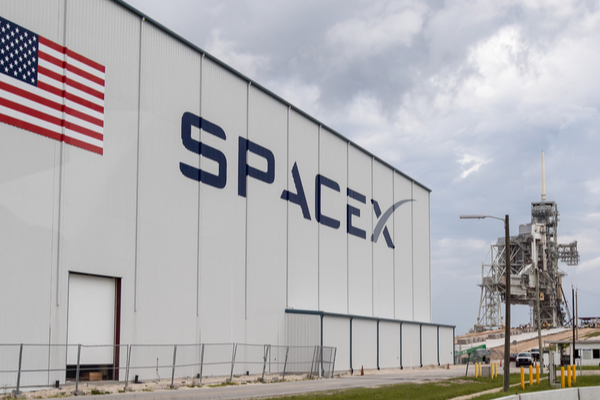After nearly two decades of effort, Elon Musk’s aerospace company, SpaceX, successfully launched its first two people into orbit, ushering in a new age of human spaceflight in the United States. The flight marked the first time astronauts have launched into orbit from American soil in nearly a decade, and SpaceX is now the first company to send passengers to orbit on a privately made vehicle. “They’re laying the foundation for a new era in human spaceflight,” NASA administrator Jim Bridenstine said before launch. “It’s an era in human spaceflight where more space is going to be available to more people than ever before.”
The two astronauts — veteran NASA fliers Bob Behnken and Doug Hurley — rode into space inside SpaceX’s new automated spacecraft called the Crew Dragon, a capsule designed to take people to and from the International Space Station. Strapped inside the sleek, gumdrop-shaped capsule, the duo lifted off on top of SpaceX’s Falcon 9 rocket from NASA’s Kennedy Space Center in Florida at 3:22PM ET on Saturday. The rocket dropped the Crew Dragon off in orbit about 12 minutes later.
“Bob and Doug, on behalf of the entire launch team, thanks for flying with Falcon 9 today,” Crew Dragon’s chief engineer said to the two astronauts after they reached orbit. “We hope you enjoyed the ride and wish you a great mission.” SpaceX’s Falcon 9 rocket also successfully landed on one of the company’s drone ships following takeoff, making for a smooth launch throughout.
This launch is a critical moment for SpaceX, a company formed by Musk with the express purpose of sending humans into space and building settlements on Mars. It’s also the final major test for SpaceX as part of NASA’s Commercial Crew Program. Through that initiative, NASA enlisted two companies, SpaceX and Boeing, to develop new spacecraft that could regularly ferry the agency’s astronauts to and from the space station. After six years of development and testing on the Crew Dragon, SpaceX pulled ahead in the race to launch humans first. Today’s mission is SpaceX’s last big test flight for that program, meant to determine if the Crew Dragon is ready to start regularly carrying NASA astronauts to the ISS in the years ahead.
While en route, Astronauts Robert Behnken and Douglas Hurley gave a tour of their Crew Dragon spacecraft using onboard cameras while the vehicle was making its way toward the International Space Station on Saturday evening. And they announced a name for the vehicle: Endeavour.
SpaceX’s Crew Dragon spacecraft docked at the space station at 10:16 a.m. ET Sunday morning after traveling 19 hours. The spacecraft made a careful approach to the space station and then made a “soft capture” — meaning Crew Dragon made its first physical contact with its docking port at the International Space Station. Crew Dragon then made a “hard capture,” which involved using 12 latches to create an air-locked seal between Behnken and Hurley’s crew cabin and their entrance to the space station and linked up Crew Dragon’s power supply to the ISS, before the first of two hatches were opened.
Watch the dock at the space station HERE.
Behnken and Hurley emerged, smiling, from the capsule around 1:15 pm ET. They were greeted by fellow NASA astronaut Christopher Cassidy and Russian cosmonauts Anatoli Ivanishin and Ivan Vagner, who were already on board the orbiting laboratory.
Watch Astronauts Behnken and Hurley enter the space station HERE.
NASA Administrator Jim Bridenstine called the station from the space agency’s mission control center in Houston, Texas. “We are so, so proud of everything you’ve done for our country, and in fact, to inspire the world,” Bridenstine said. When asked about their 19-hour journey to the space station, Hurley said he “couldn’t be happier” about the performance of SpaceX’s Crew Dragon. The astronauts were able to sleep for a few hours, share meals and use the on board toilet during their journey. “The Dragon was a slick vehicle, and we had good airflow, so we had an excellent, excellent evening,” Hurley said. Behnken and Hurley are expected to remain on board the space station for one to three months, or for a maximum of 110 days.
SpaceX’s ambitions don’t stop there. The company is currently working on a new monster rocket called Starship, which may one day take humans to deep space destinations like the Moon and Mars. There are plenty of hurdles between that bold vision and reality, but today’s success is a step in the right direction for a company aiming to take people deeper into the cosmos. “Everything in our trajectory is towards that particular moment to launch people on a spaceship,” Hans Koenigsmann, vice president of build and flight reliability at SpaceX, said during a press conference. “And it’s a huge step.”
—
Photo Credit: L Galbraith / Shutterstock.com
